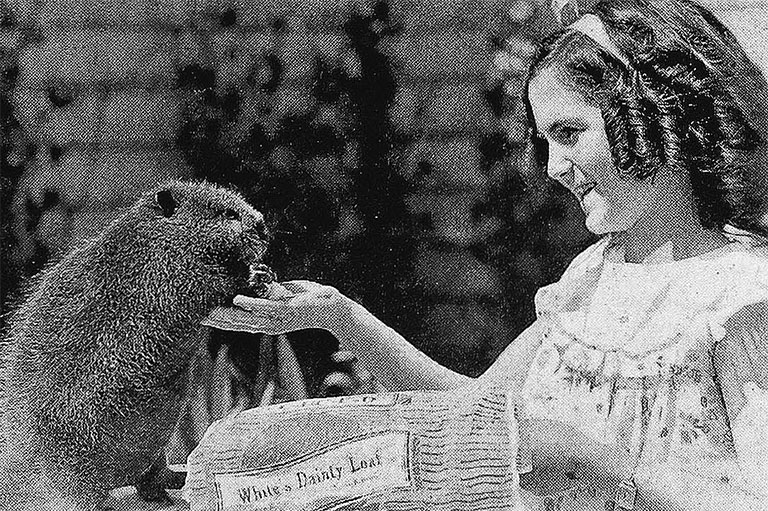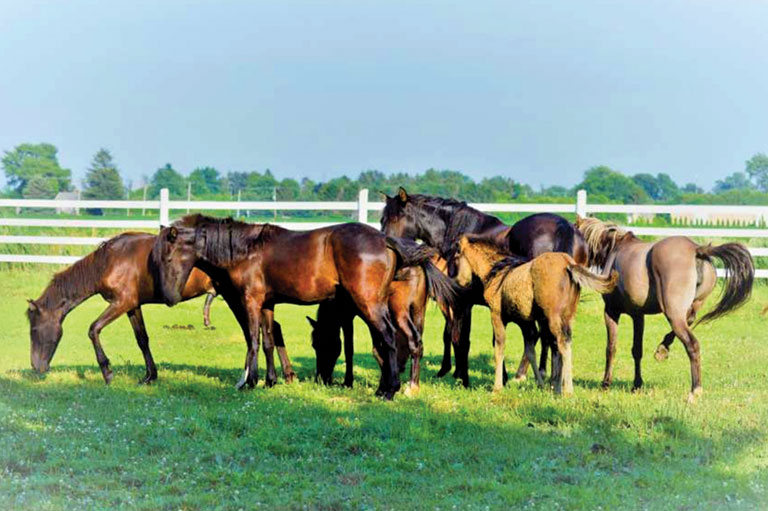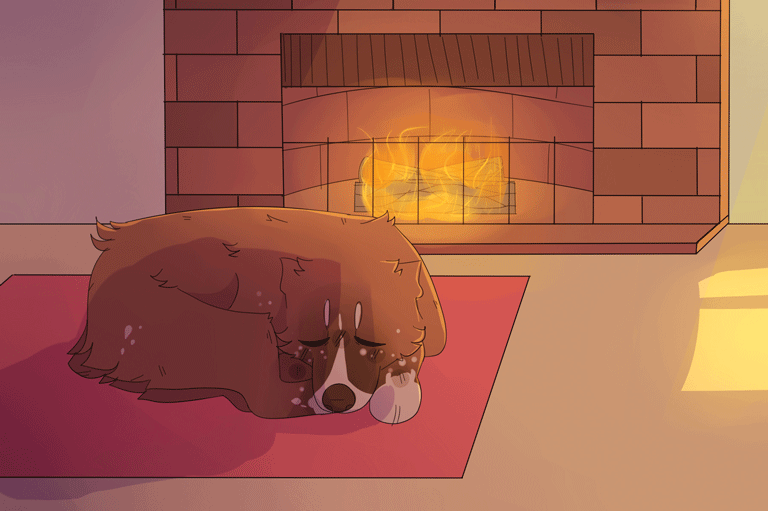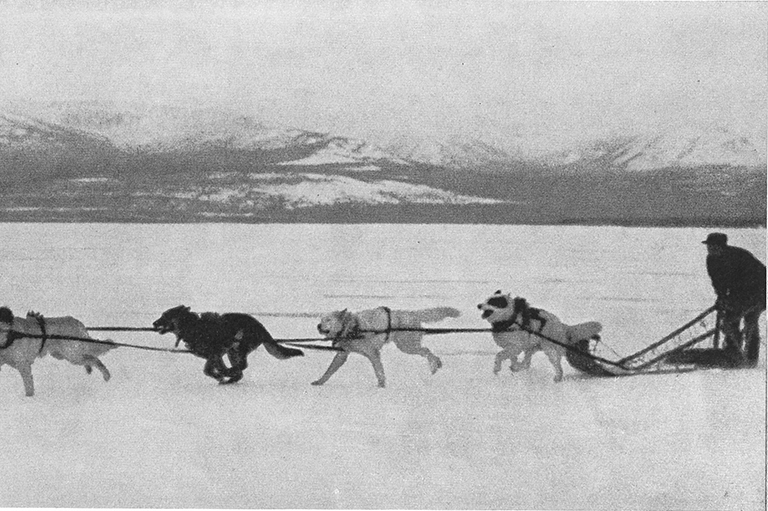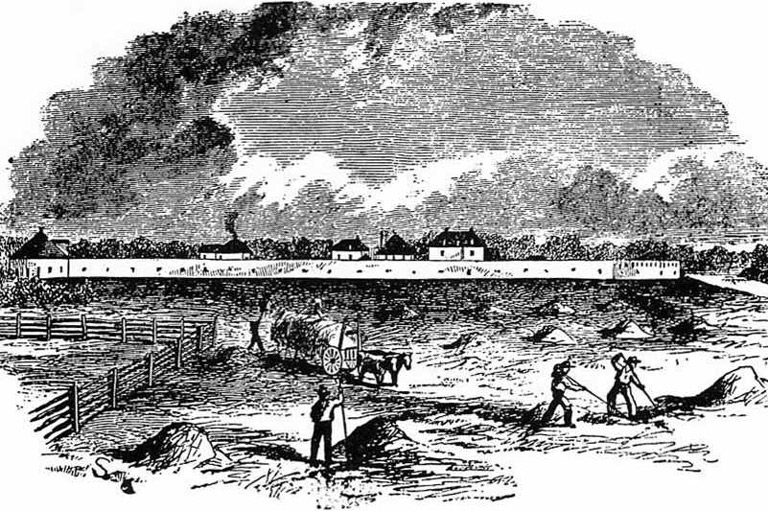Creature Comforters
From prime ministers to army privates, people of all ranks and stations adore their animal companions. Pets and working beasts have inspired acts of compassion, conservation, and sometimes even artistic greatness. Furred, feathered, or fetlocked, here are a few animals that have pawed, prowled, and pranced their way into Canadian history.
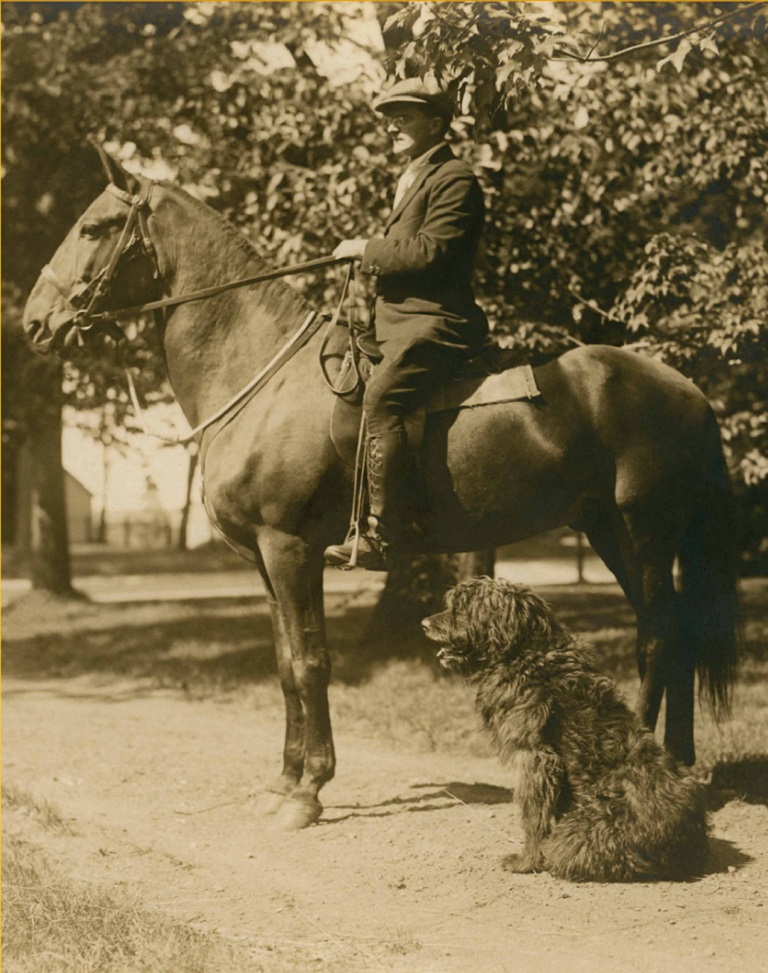
WARHORSES
Roughly one out of every ten horses the Allies used in the First World War came from Canada — about 130,000 in all. The Toronto Police Force’s mounted unit sent eighteen, of which only Bunny, a strawberry roan that saw action at Vimy Ridge, survived. Although the city offered to pay Bunny’s way home after the war, the military decided that only officers’ horses would be returned, and he was sold to the Belgian government. The only Canadian Member of Parliament to die in the war, Lieutenant-Colonel George Harold Baker, also had an equine companion. Baker, who commanded the Fifth Canadian Mounted Rifles Battalion, left Quebec on July 18, 1915, with his horse, Morning Glory. Upon arriving in Europe, Baker was separated from his horse, as his battalion was converted to infantry and sent to the trenches. Baker was killed in Belgium; there is a statue of him in the House of Commons in Ottawa. Morning Glory, who worked behind the lines in France, was given to an officer and returned home after the war. The horse pictured here, Fritz, was captured from the Germans. Lieutenant Colonel C.E. C.E. Bent of the Fifteenth Battalion, shown astride Fritz, adopted the horse and a sheepdog, Bruno, also pictured here.
BELOVED BEAR
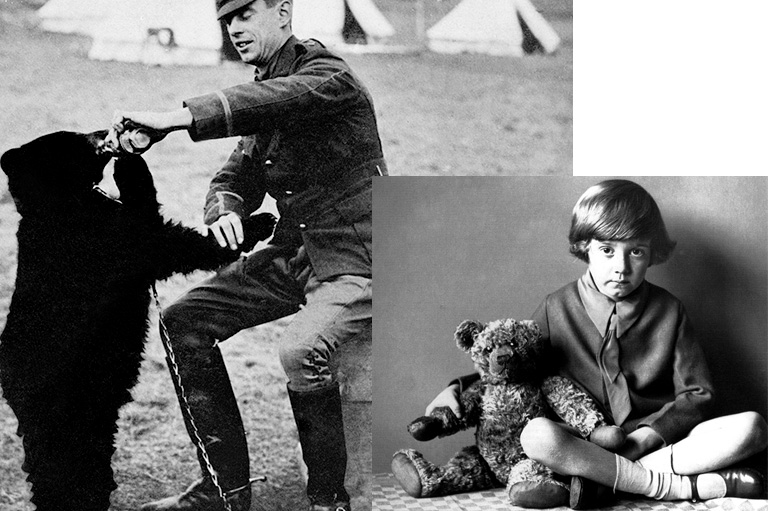
Military veterinarian Lieutenant Harry Colebourn was on his way to the First World War training camp in Valcartier, Quebec, in 1914 when his train stopped in White River, Ontario. There he met and bought a friendly seven-month-old female black bear cub. Colebourn named the bear Winnipeg — soon shortened to Winnie — after his hometown. The playful bear, pictured above with Colebourn, became the mascot for the Second Canadian Infantry Brigade. The troops treated Winnie as a pet and took her with them to England. When the brigade left for France in 1915, Colebourn took Winnie to the London Zoo for safekeeping. Seeing how beloved she became, he donated her permanently in 1919. That’s where author A.A. Milne and his son, Christopher Robin, pictured above right, got to know her — an acquaintanceship that led to Milne’s famous Winnie the Pooh books. There’s a statue and plaque to Winnie in the zoo to this day.
Not-so-famous Canadian pets
GREY OWL, BROWN BEAVERS
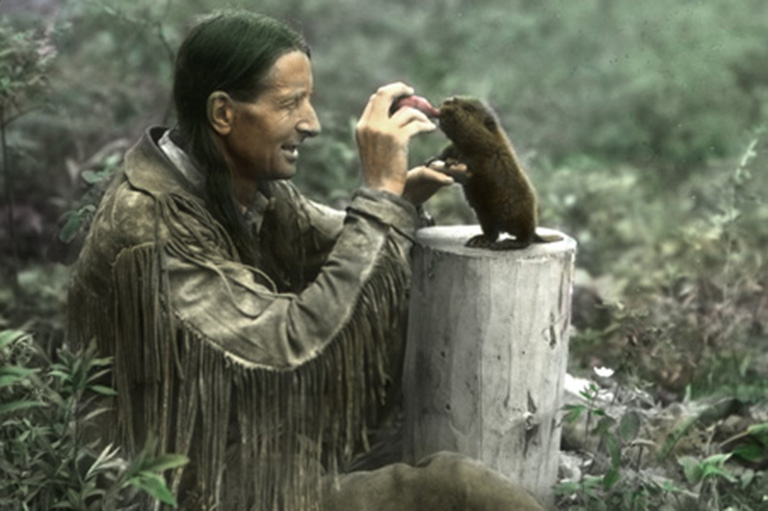
While the beaver, writ large, is central to the story of Canada, no individual beavers are better known than Jelly Roll and Rawhide. Their tale is interwoven with that of Archibald Belaney, the Englishman who called himself Grey Owl, so the facts can be slippery. The most common version says that Belaney caught the kits’ mother in his trapline. His Mohawk partner, Gertrude Bernard, persuaded him to spare the little rodents, who became pets. A 1930 National Film Board short, Beaver Family, even chronicled their lodge-building skills. Jelly Roll and Rawhide lived with Belaney and Bernard, first in Manitoba’s Riding Mountain National Park and then in Prince Albert National Park in Saskatchewan. Grey Owl is seen above, feeding one of the baby beavers from a bottle. The bark-chewing duo probably inspired the human couple’s work to conserve Canada’s national animal.
PAINTER’S PET
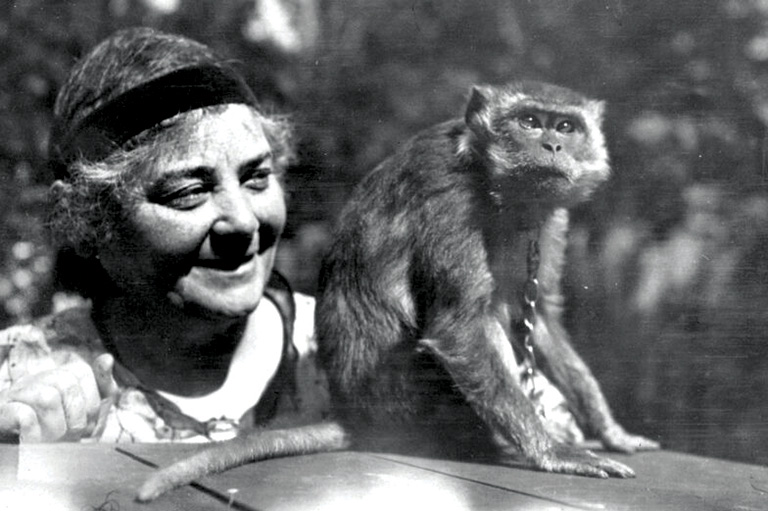
Among Emily Carr’s many companion animals, she retained a special affection for her Javanese macaque monkey, Woo, pictured here with her in 1930. Carr obtained the monkey in 1923 from a pet shop in downtown Victoria. The monkey “named herself” on her first night in Carr’s home, with her “sad wailing, ‘Woo, woo, woo,’” Carr wrote in her story collection The Heart of a Peacock. Woo had her own corner in Carr’s studio and may have inspired the artist’s creativity. “Some of Woo’s stupid critics might well have learned, from my monkey, ingenuity, thoroughness,” Carr wrote. “Every object must be felt, smelt, tasted, pulled to pieces before her curiosity was satisfied.” When Carr fell ill in 1937, Woo was sent to live at Vancouver’s Stanley Park Zoo.
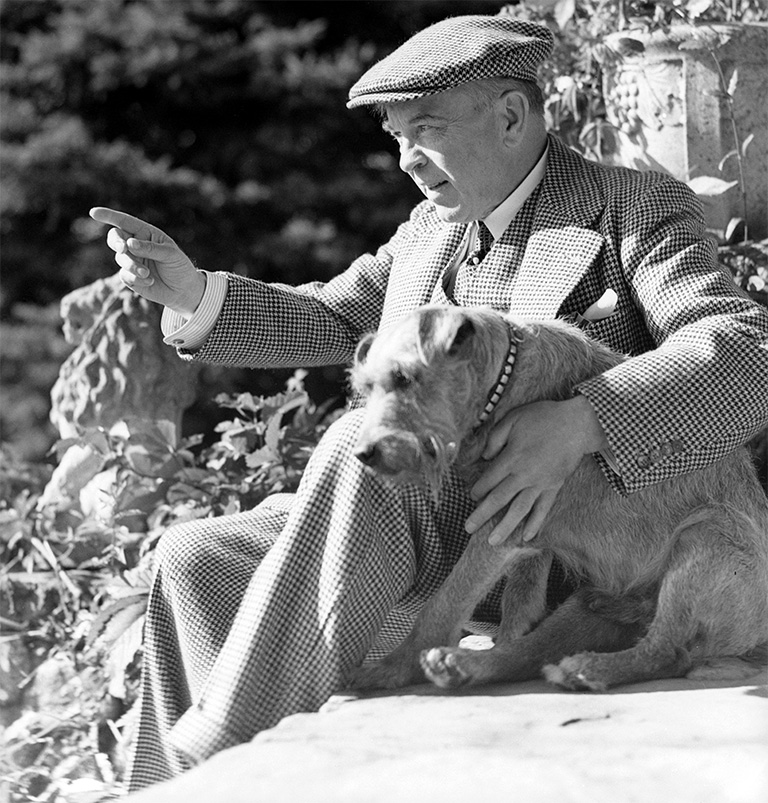
PAT, PAT, PAT
“It is so true, and strange that having all in the eyes of the world as prime minister, Pat alone seems to be the one life I truly possess,” Prime Minister William Lyon Mackenzie King wrote in his diary on July 12, 1941. Pat was King’s beloved Irish terrier — well, one of them. Neighbours Godfroy and Joan Patteson gave King the first Pat — “the truest friend I ever had” — in 1924. The dog, pictured here with King, lived seventeen years. When Pat fell ill in 1940, King postponed a cabinet meeting to be by his side. In his book Being Prime Minister, J.D.M. Stewart quotes a King aide as saying that the prime minister looked favourably on anyone Pat liked, “from Cabinet ministers on down." In 1941 the same couple gave King the second Pat, who died six years later. King’s private secretary, Edouard Handy, provided the third Pat, who was given away after King died in 1950. Regardless of whether, as rumoured, he consulted his dogs on matters of state, King sang to, read to, and walked with all of his treasured Pats. Present-day visitors to the Mackenzie King Estate — King’s summer home in the Gatineau hills north of Ottawa — can enjoy tea and scones at Café Pat.
LITERARY HOUND
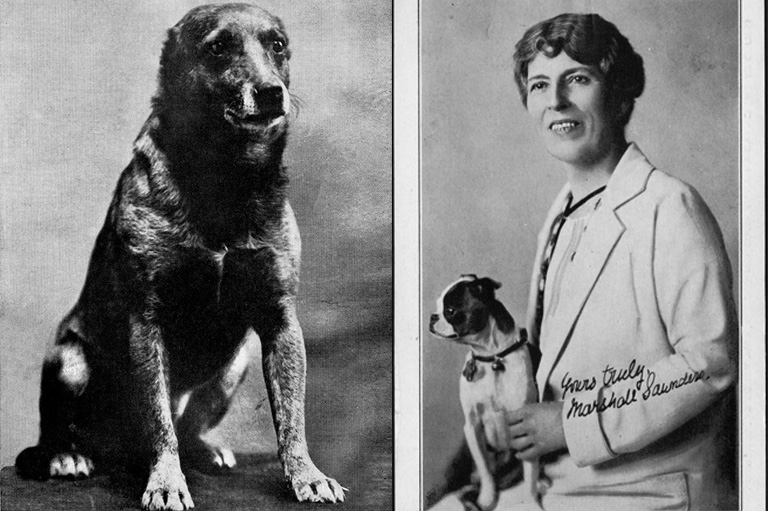
The beloved tearjerker Beautiful Joe, by Margaret Marshall Saunders, told the story of a real dog, pictured above, who was rescued by a kind family after his original owner had cut off his ears and tail. In 1892, Saunders, shown above right, submitted a heart-rending story about him to an American Humane Education Society contest (under the name Marshall Saunders) and won. The book followed the next year, and by the 1930s it had sold seven million copies. A bronze statue of Beautiful Joe stands in the eponymous park in Meaford, Ontario, where he is buried.
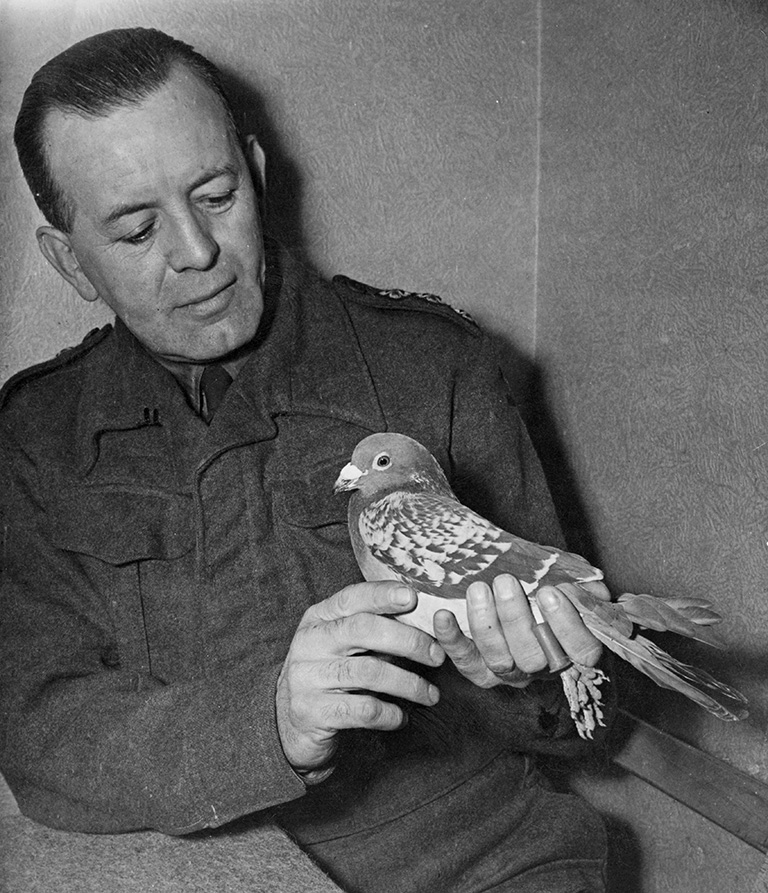
DOVE OF WAR
When the first wave of Canadian troops landed at Dieppe, France, on the morning of August 19, 1942, the news made its way out not via telephone or telegraph, or even on board a ship. Rather, it was entrusted to Beachcomber the carrier pigeon, pictured here in retirement in England in 1943. Canadian troops released the bird with the message attached to his leg. Beachcomber, a member of the British Army Pigeon Service, flew through an intense aerial battle and delivered the information safely to British commanders in England, according to the official citation that accompanied his 1944 Dickin Medal, an award sometimes referred to as the “animal Victoria Cross.”
INFANTRY UNGULATE
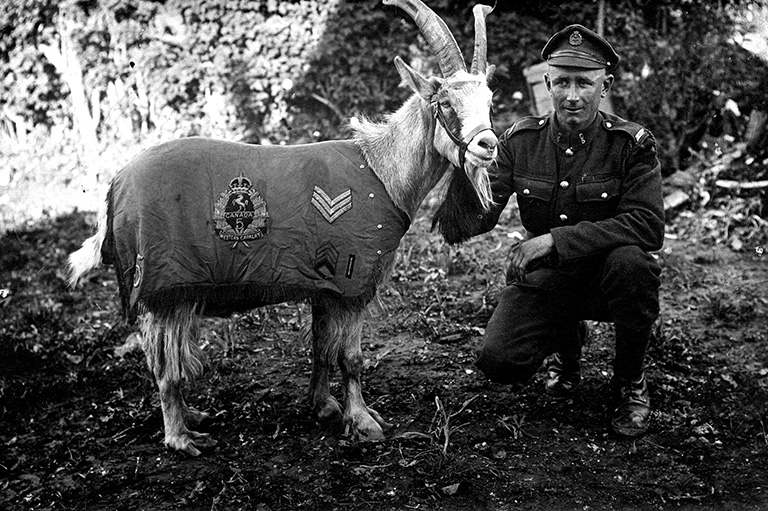
When a group of soldiers from Western Canada stopped in the small town of Broadview, Saskatchewan, en route to joining the Fifth Battalion, Canadian Expeditionary Force, in Valcartier, Quebec, a family gave them a goat named Bill. The troops dubbed their new mascot Sergeant Bill and snuck him first to England and then, in 1915, to the front lines in France. Arrested twice — once for eating paperwork — the goat later distinguished himself by standing guard over a Prussian soldier in a crater, despite his own injuries. Another time he butted three Canadians into a trench seconds before a shell exploded where they’d been standing. Sergeant Bill lived through battles at Vimy Ridge and Festubert in France and at Ypres and Passchendaele in Belgium, enduring gassing, shelling, and trench foot — or, in his case, trench hoof. He was awarded a sergeant’s chevrons as well as the Mons Star, the British War Medal, and the Victory Medal. He is shown above, in his finery, with an unidentified member of the Fifth Battalion. Despite a commanding officer who wanted him left behind and an immigration official who was reluctant to allow him back into Canada, Sergeant Bill paraded with his brothers-in-arms back in Saskatchewan, where he was returned to his family. He died soon after but was preserved and mounted, and he now stands behind glass in the Broadview Historical Museum.
LITTLE CHAMPION
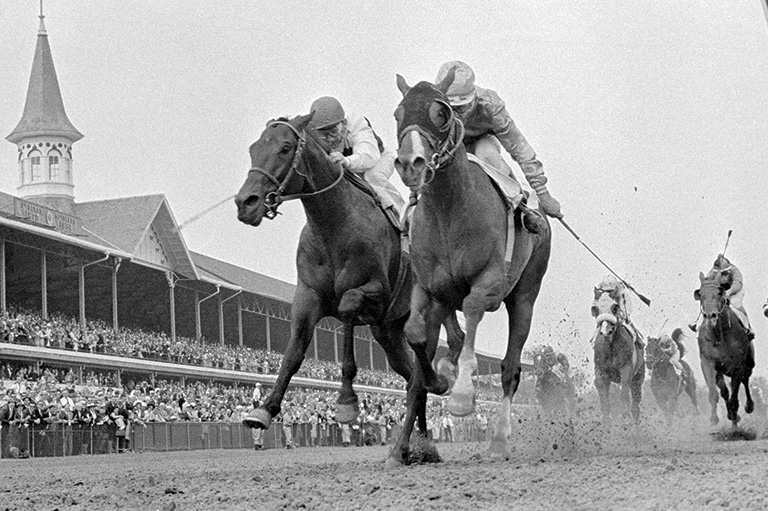
Born in 1961, Northern Dancer was too small by horse-racing standards to be considered a competitor. When nobody bid on the horse as a yearling, owner Edward Plunkett Taylor turned him over to legendary trainer Horatio Luro, who saw the little bay’s potential. On May 2, 1964, Northern Dancer became the first Canadian horse to win the Kentucky Derby, where he set a record. He is shown above, centre right, with jockey Bill Hartack, reaching the Kentucky Derby finish line a neck ahead of Hill Rise, left, ridden by Willie Shoemaker. After the Derby, Northern Dancer won the Preakness Stakes, finished third in the Belmont Stakes (the last part of horse racing’s triple crown), and came home to win Canada’s most prestigious race, the Queen’s Plate, by seven lengths. In all, Northern Dancer won fourteen of eighteen races in his thirteen-month career. He went out to stud at the end of 1964 due to an injured tendon and is still considered the greatest sire in the history of racing. Thousands of thoroughbred racehorses are his descendants. In 1965, Northern Dancer became the first animal to be inducted into Canada’s Sports Hall of Fame.
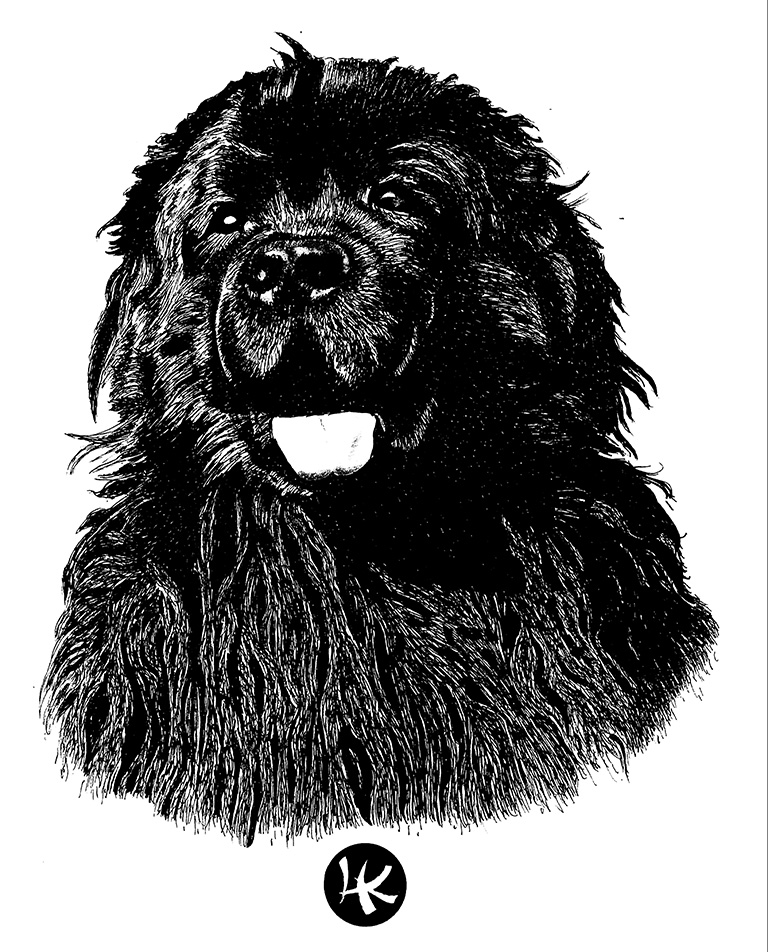
LION-HEARTED DOG
This Newfoundland dog made a noble sacrifice amid the brutal fight to maintain British control of Hong Kong against Japanese invasion in 1941. Gander was given to the Quebec City-based Royal Rifles of Canada by a civilian family when the regiment was stationed at Gander airport in Newfoundland. During the Battle of Lye Mun in December, 1941, Gander defended the Canadian soldiers fiercely, protecting wounded men and repelling attackers. When an enemy soldier tossed a grenade, Gander grabbed it in his mouth and ran off, saving the troops who loved him at the cost of his own life. He received the Dickin Medal post-humously in October 2000. There is a statue of the heroic dog in Gander Heritage Memorial Park in Gander, and his name is listed on the Defence of Hong Kong Memorial Wall in Ottawa. The print of Gander, left, was made from a pen-and-ink sketch drawn by Charles Frederick Lalonde, formerly of the Royal Canadian Navy, to commemorate the sixtieth anniversary of the defence of Hong Kong.
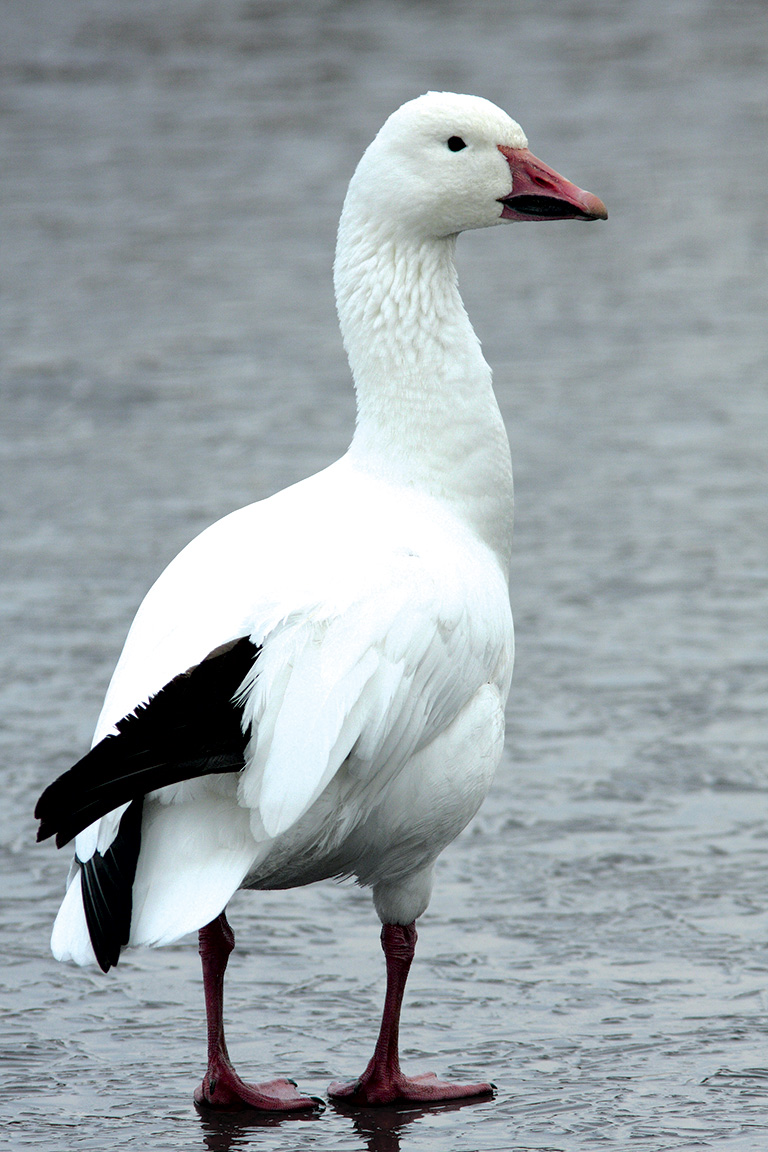
GUARDIAN GOOSE
The story goes that a sentry of the British Army’s Second Battalion Coldstream Guards (they of the towering bearskin hats), on duty in Quebec City circa 1838, saved a goose that was being attacked by a fox. Afterwards, the white goose, similar to the one pictured at left, often marched alongside the men at the same post. The soldiers named the goose Jacob. A few months later, when enemies armed with knives snuck up on a sentry, Jacob honked the alarm and rushed at them. For his service, Jacob was awarded a spiffy golden gorget. (Given that the enemy attackers were likely Patriotes rebelling against British colonial occupation, the story may not sound so heroic to Canadian ears.) When the regiment returned to England in 1842, Jacob came along, only to be run over in the street in 1846. His preserved head and the gorget are still on display at the Guards Museum in London.
Not-so-famous Canadian pets
Themes associated with this article
Advertisement




